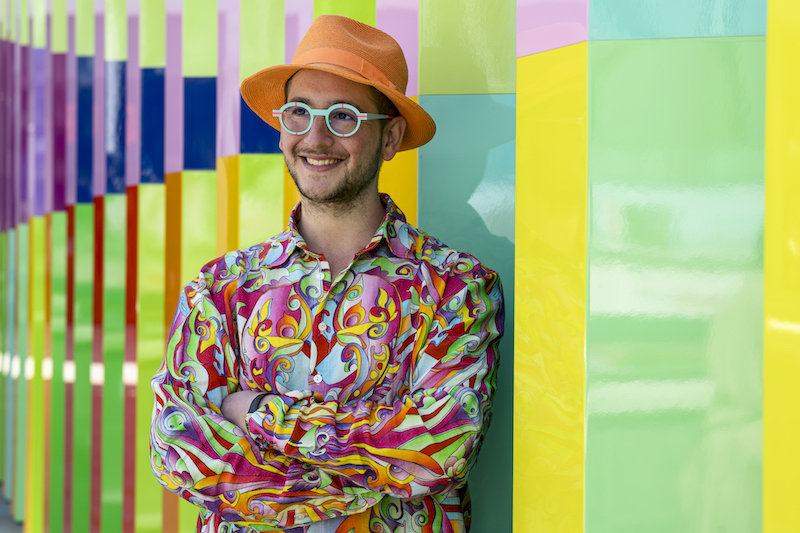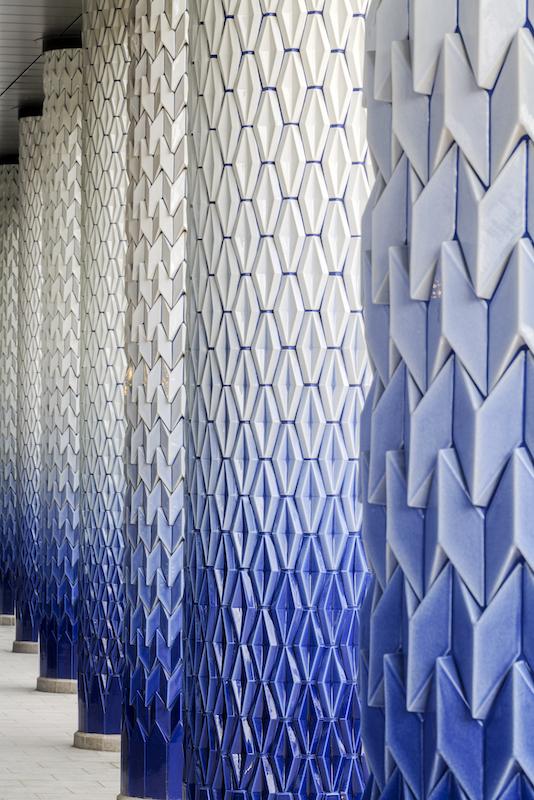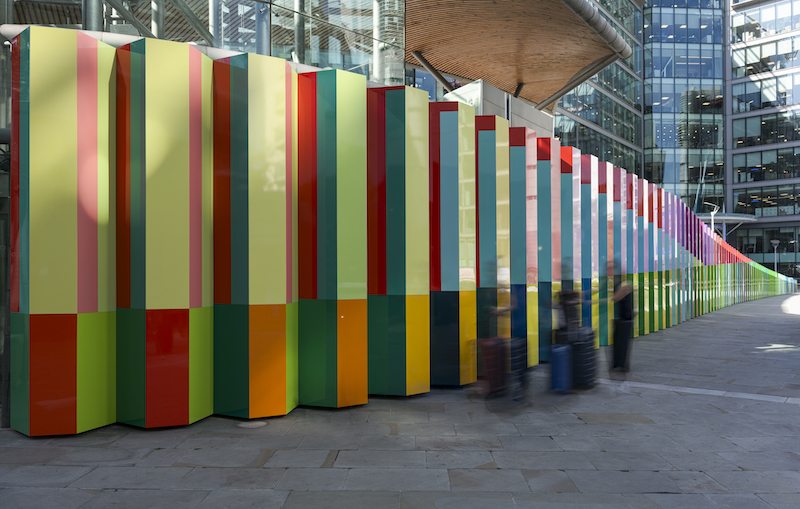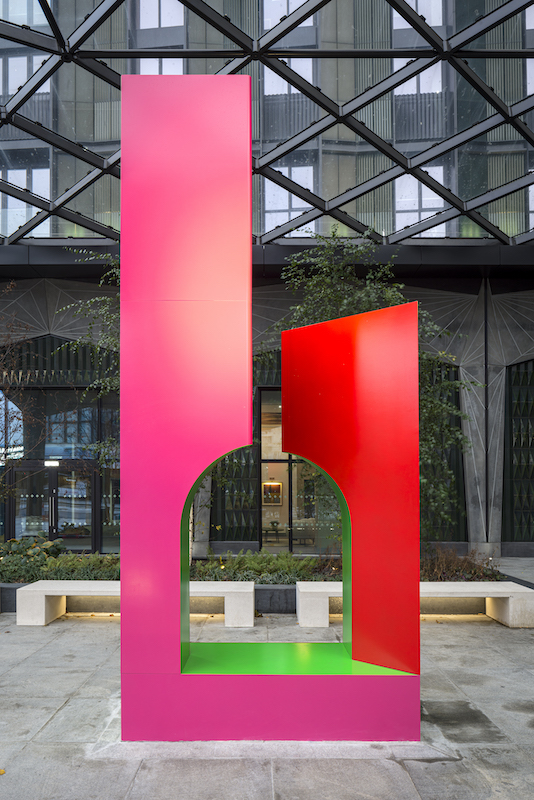Post
Designing the cover of London of the Future was about my imaginary city, says Adam Nathaniel Furman
20 Sep 2023
British artist and designer Adam Nathaniel Furman is excited about an inspiring new festival, Queer Nature, at Kew Gardens which opens in October, celebrating the diversity and beauty of plants and fungi.
Furman will design an immersive space to house a film-based installation, featuring interviews with over a dozen horticulturists, scientists, authors, drag artists and activists as they explore what Queer Nature means to them.
Check out our rundown of upcoming events
‘We have five-metre high silk hangings covered in queer flora, like lavender pansies and carnations. Ornaments made up of all of floral symbols of lesbian and gay culture,” they explain.
We spoke to Furman about their multi-colour design for the cover of the London Society’s book London of the Future.
Rob Fiehn, director of TLS asked if I would be interested in doing the cover, and I was said ‘Are you sure? You know my stuff’, and he seemed very confident about it. So I was very happy to do it.
Did you have like an initial vision of what the book cover would look like?
There is a general shape to it that I roughly know at the beginning, but then filling in the gaps is where the fun is. I knew I wanted an axonometric (a graphical procedure that generates a planar image of a three-dimensional object) city that was viewed from above, which I think is a really nice format. I’m always designing imaginary cities. It's my favourite thing.
Subscribe to the London Society newsletter
I'm one of those obsessive geeks about London. Its history, its future and its contemporary state and infrastructure.
So the cover was bringing together my imaginary dreams of future cities. I wanted to do something really positive. I was thinking about collective housing and imagining ways that all this spectacular architecture, whether it's brutalist or art deco or postmodern, could be put to good service.
The London of the Future book cover is a mash-up of bizarre, futuristic London with these giant monumental blocks, and I'm imagining lots of interiors in them, and then interspersing it with my versions of future monuments.
Where are your favourite places in London?
Well, it's easy because I'm a man of repetition. I go back to the same place again and again and again. So in terms of buildings, my favourite secular interior is the British Library. I also love Westminster Cathedral. That's my absolute calming space. I also go to St. Paul's Cathedral if I want a bit of baroque splendour, and also the Brompton oratory. It has capacious interiors of beautiful domes, it's always empty, heavy with incense, so it smells lovely.
With the architectural historian Joshua Mardell, you co-edited Queer Spaces, published by RIBA, which includes pieces from contributors on spaces where LGBTQ+ individuals have found safety and solidarity over the decades.
It was a very personal project. Because I had an absolutely shite time in the [architecture] profession. On top of that, there was the absence of any queer history in architecture school. Many of my friends who are queer, gay, lesbian or gender non-conforming people wanted to express themselves through their work. They were bullied out. Because of my experience as a teenager in London, and being kicked out of school, I just had to deal with this stuff. I was like a dog with a bone and I got through it.
The drive for it was to create an accessible resource of a huge range of case studies, so that architecture students could use it as a reference. Also it was published by the Royal Institute of British architects, so it couldn't be laughed out of the room.
It has had an incredibly profound effect. We constantly get messages from people who like photographs, the students who are using the book in their presentations
I just don't want future generations to have to go through what I went through. Nobody should have to hide themselves in their professional network.
PRE-ORDER YOUR COPY OF LONDON OF THE FUTURE
All images by Gareth Gardner @gardnergareth



